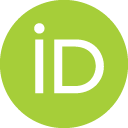A Five-Pillar Framework for Formative Assessment in Mathematics
Abstract
Effective formative assessment remains a critical yet underutilized strategy in mathematics education, often hindered by inconsistent implementation and a lack of structured frameworks. This study introduces the Five-Pillar Formative Assessment Framework, a research-driven model designed to embed systematic, student-centered assessment practices in mathematics instruction. Grounded in sociocultural learning theory and iteratively refined through design-based research (DBR), the framework consists of five interrelated components: learning targets, monitoring (questioning techniques), feedback, self-assessment, and peer assessment. Empirical insights from its implementation in National Curriculum (Vocational) Level 2 mathematics classrooms demonstrate its effectiveness, with average student scores increasing from 7.9 in 2021 to 11.5 in 2022 (out of 20 marks). By fostering a student-centered assessment culture, the framework enhances conceptual understanding through scaffolded feedback, interactive learning, and structured self-regulation. Unlike traditional summative assessment models, this framework promotes continuous instructional refinement, supporting educators and students in leveraging assessment for learning rather than solely for evaluation. The study highlights the potential of structured formative assessment strategies to enhance mathematical reasoning and problem-solving skills, offering a scalable and theoretically grounded approach for diverse educational settings. The integration of DBR ensures that the framework remains responsive to emerging educational challenges, making it a valuable tool for researchers, policymakers, and educators. Future research should explore its broader applicability across disciplines, longitudinal impact on student learning trajectories, and potential integration with digital learning technologies to optimize assessment-driven instructional innovation.

